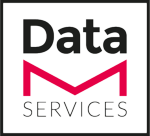
Making the coal glow
How Fire&Food has expanded its digital publishing business
Sigrid Sieber, Managing Director of DataM Services and Martin Wepper, Managing Director of dsb ebusiness
Published in: DiALOG - THE MAGAZINE FOR ENTERPRISE INFORMATION MANAGEMENT | MARCH 2019
The publishing business, which is nothing new, is facing major challenges as a result of digitalisation. The traditional, purely subscription-based business model needs to be rethought, as customers are increasingly demanding more flexible and individualised offerings. But how do publishers know what their customers want from them? Or even more importantly, who their customers actually are? In the case of Fire&Food, the grill and barbecue magazine, the aim was to gain a precise overview of its own customer base. In addition, there was the task of standardising the structure of numerous different sites and web shops that had grown over time and bundling them into a single integrated and SEO-relevant portal.

The first steps into digital business
A major challenge for Fire&Food was to gain an overview of the exact database that was generated on the various platforms via different touchpoints. This large amount of data made it difficult to really understand the company's own customer structure. The first steps towards the digital transformation of Fire&Food's business model were therefore taken here. The first step was to analyse the current situation in order to record it as accurately as possible. The main questions were: Who are my existing customers and where are they located? Which products are in demand and by whom? How do the processes work so far - via which portals - and what level of digitalisation is Fire&Food already at? On this basis, it is then possible to look to the future, because a digitalisation strategy can only be successful if it understands where customers and their needs will develop. The basis for this is data.
Pooling and maintaining data
Evaluating the legacy systems and transferring them to a standardised system was a priority at the start of the project with Fire&Food. Based on this, potentials could be analysed and a "roadmap" developed for further alignment. Close cooperation with the customer was crucial here. On the one hand, it is important to understand where the customer would like to position itself more strongly in the future and, on the other, to give it an impression of where markets and potential are likely to develop so that it can not only react to customer interests, but also proactively stimulate them. It is very important that everyone involved in this process feels involved so that the change towards data-driven work can be successfully implemented at all levels.
MVP - Minimal Viable Product
Once the database has been collected, the development and implementation of the digital strategy can begin. The first step here is to develop a minimum viable product (mvp) in order to test the potential of a new product with minimal effort. At Fire&Food, the web shop was initially used to test new offers, such as the option to order gift packaging at the same time as placing an order. At the mvp level, the effort here is still so low that the product can be offered in the company's own system without any fundamental changes. A gift bag and a ribbon can initially be added to each parcel by hand. However, the real added value lies in the data obtained in this way. How often is the service booked? By which customers and for which products?Based on these insights, the potential of an mvp can be determined and the product scaled accordingly. If the potential is large enough, it can be implemented on a broad scale. This is where the real change in internal processes begins, with processes being automated. This is accompanied by changes in the supply chain, for example. Gift packaging is then no longer packed in the warehouse on site, but at the manufacturer's premises. New publishing offers can be tested in the same way. A flex subscription can be offered for a short period of time. Customer responses are also used here to analyse whether the model is sustainable.
When it comes to scaling, it is crucial that the automation of internal processes works as smoothly as possible. To achieve this, it is important to set up the front-end services (e.g. the web shop interfaces) from the outset in such a way that they interact optimally with the back-end systems. The best-case scenario is complete horizontal coverage of all relevant fields - an all-in-one solution that integrates existing systems and provides all missing elements, from accounting, billing and databases to advice on process optimisation.
Customised to the customer
Such comprehensive systems give all employees an overview of the relevant processes across all departments. This enables a much better understanding of the customer, including in service. Automation also helps here. For example, email enquiries can be processed automatically in corresponding systems. An intelligent system can answer frequently asked questions independently and forward further emails directly to the appropriate contact person. This saves time, enables faster and more accurate responses and thus helps to increase customer satisfaction. This is a relevant development, as customers are increasingly resorting to electronic enquiries and less frequently to the telephone. This has another advantage, because while a waiting time of ten minutes on the phone is an imposition for most people, they generally consider a 10-minute response time for emails to be excellent service. Relying on a professional and data-supported CRM system therefore effectively gives a company even more time while at the same time increasing satisfaction.A look into the digital future
The German publishing industry is sometimes still somewhat reticent when it comes to restructuring and reorganisation. However, companies do not need to have a great deal of IT expertise to begin with and can still drive their business forward in a targeted manner. A look to the left and right can provide additional motivation, as in the UK and the USA, 80 per cent of sales are generated by digital services. It's now less about subscriptions and more about memberships, less about publishers and more about all-rounders! So the motto for 2019 is: heat up digitalisation! DataM-Services is a leading provider of cross-media address management, direct marketing and sales consulting. DataM offers companies, publishers and magazine publishers an all-in-one solution and combines subscriber and contact management with traditional and digital distribution. Over 25 publishers rely on the experts and distribute around 35 million print copies annually via DataM's activities. Founded in 1998, the company is part of the Vogel Communications Group and is based in Würzburg.
www.datam-services.de

Founded in 2010, the company is part of the dsb Group and specialises in e-commerce consulting. In addition, the consultants at dsb ebusiness support and accompany their customers in the realisation of comprehensive e-shop solutions. In addition to e-consulting, online marketing, marketplace connections, development and integration of paywalls, the service portfolio also includes SEO and SEA support. In-house developments in the area of data warehousing enable customers to carry out complex analyses and precise management of measures.
